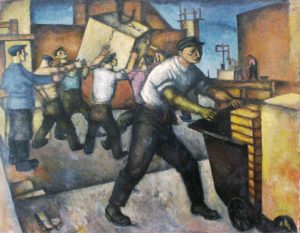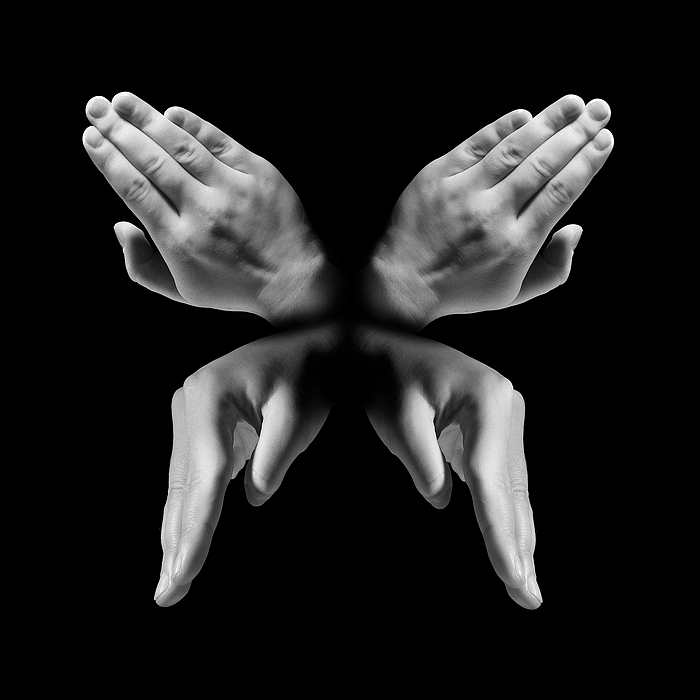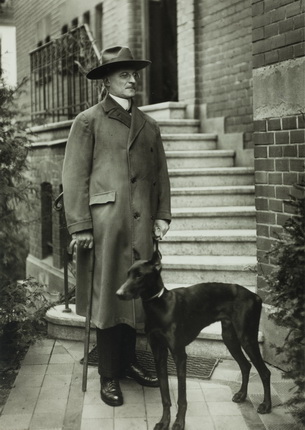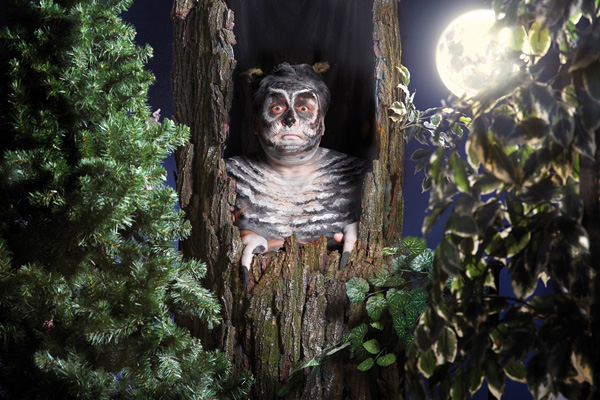EXHIBITION PROJECT “SPECIAL FUND: REPRESSED ART”
 The Odessa Art Museum in partnership with the National Art Museum of Ukraine and with the support of the Ukrainian Cultural Foundation presents the project “Special Fund: Repressed Art”.
The Odessa Art Museum in partnership with the National Art Museum of Ukraine and with the support of the Ukrainian Cultural Foundation presents the project “Special Fund: Repressed Art”.
The exhibition presents 80 works from the collection of NHMU, which were mothballed in the late 1930s and have been hidden from public view for many decades. Most of the works presented in Odessa are exhibited for the first time. Alexander Bogomazov and Timofey Boichuk, Vadim Meller and Antonina Ivanova, Oksana Pavlenko and David Burliuk, Pavel Golubyatnikov and Konstantin Eleva, Anatoly Petritsky and Suher-Ber Rybak, Victor Palmov and Abram Cherkassky – more than three dozen names of artists, known and forgotten, whose works in 1937, it seemed, they were forever hidden from the audience: “they have no artistic or museum value, and, as works of the enemies of the people, are to be destroyed”.
The special fund was formed in the State Ukrainian Museum (now NHMU) during 1937-1939. It was here from the museums of Kharkov, Odessa, Kiev, Poltava, from the funds of the Ukrainian art exhibition that the works of “enemies of the people”, “formalists”, “nationalists” – those who, according to party ideologists, “distorted reality” and were a threat to “new society. ” So, the works of artists got into the special fund, most of which were removed for a long time from the history of Ukrainian art. The fate of the masters was tragic, the punitive car was not stopped either by age or sex: at the time of the shooting, Mikhail Boychuk was 55 years old, Sophia Nalepinskaya-Boichuk – 53 years old, Ivan Lipkivsky – 45, Vasily Silvestrov – 49, Nikolai Ivasyuk – 72, Vasily Sedlyar – 38, Ilya Levsha – 60 years. All of them, despite their unique artistic style and life views, were shot on charges of counter-revolutionary nationalist activities. Onufry Bizyukov and Cyril Gvozdik – received significant prison sentences; only those who left Ukraine in time could survive. Joseph Gurvich, Irina Zhdanko, Oksana Pavlenko, Antonina Ivanova moved to Moscow. And those who remained in Ukraine and escaped repression, forever changed their lives and creative manner.
It was only in the late 1980s that the systematic work on the research of the special fund began. The history of Ukrainian art has been replenished with forgotten names that have rediscovered the Ukrainian avant-garde. In the early 1990s, a number of exhibitions took place in Italy, the USA, Canada, Germany, and work began on a thorough study of the Mikhail Boychuk school. In 1998, at the National Art Museum of Ukraine, for the first time, a significant part of the works from the special fund were presented in their entirety. An even larger exhibition was held in the walls of the National Art University in 2015.
The exhibition in Odessa is not a literal repetition of the exhibition NHMU. Supplemented by works from the collection of the Odessa Art Museum, it vividly demonstrates the roll between the two museums. So, for example, next to the “Kiev” Anatoly Petritsky, the “Odessa” his work “The Rest” is presented – in both works we recognize the flavor of the Ukrainian avant-garde. Next to the portrait of Nikolai Belyashevsky, director of the Kiev City Art, Industrial and Scientific Museum (now the National Art Museum), a portrait of Belyashevsky by Mikhail Zhuk, who lived and worked in Odessa from the 1920s until his last days, is exhibited by Mikhail Kozik. Next to the work of the Odessa artist Theophilus Fraerman, meeting with which will be a surprise for the viewer, the work “Interior” from the collection of the Odessa Art Museum is presented.
Comparing the Ukrainian art of 1920–1930s with the Russian one, one cannot but pay attention to the obviousness of the differences, in particular, if the artists of the most important OST group in Soviet Russia were expressive means of their German contemporaries, whom they declared to be degenerate art, then Ukrainian artists time stylistically closer to the art of early European Italy, where the turn from futurism to neo-classicism was being made at that time. This gives reason to use the term Ukrainian novecento in relation to the Ukrainian art of that period and to consider it in the common European context of transforming the avant-garde of the early 1920s into the totalitarian art of the 1930s and 1940s.




